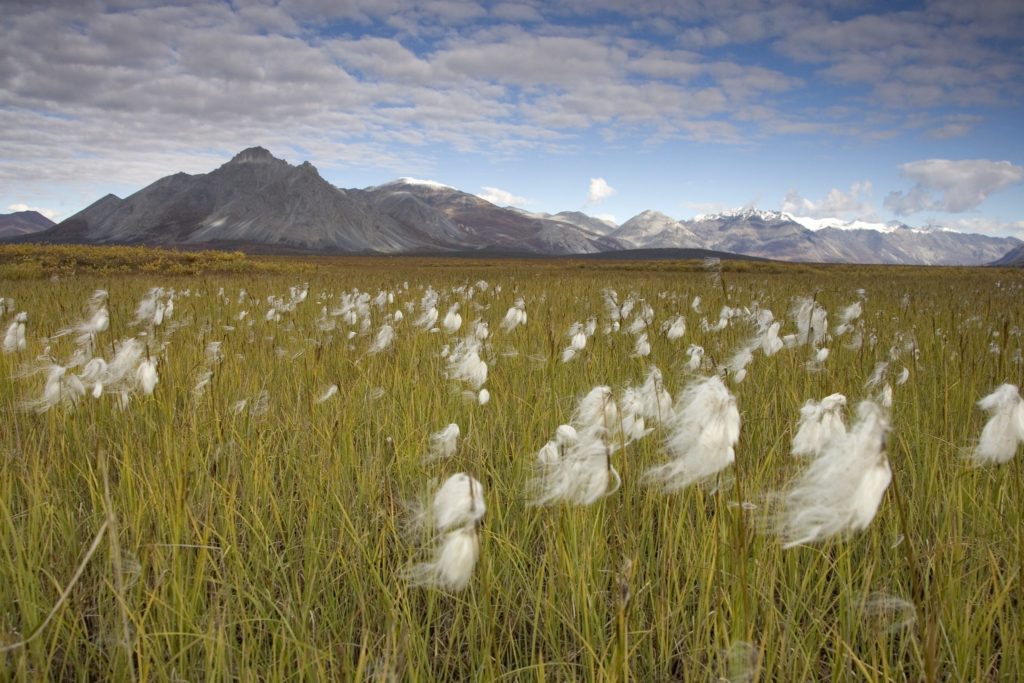PUBLISHER’S NOTE: As a matter of policy, publication of content on the Animal People Forum does not imply that Animal People, Inc. agrees with or endorses the ideas expressed within. As a 501(c)3 charity, Animal People specifically does not endorse political candidates for office, and all political opinions and endorsements contained in this article are the author’s own and not those of Animal People.
In December, the Bureau of Land Management (BLM) released its draft environmental impact statement (EIS) in preparation for an oil and gas lease sale in 2019 within the ecologically sensitive coastal plain of the Arctic National Wildlife Refuge, America’s premier wilderness refuge. This is the latest move by the Trump administration in a rushed process to allow drilling in one of the nation’s most remote and iconic landscapes.

One of the many iconic views in the Arctic National Wildlife Refuge. Image credit USFWS/Hildebrand, CC BY-SA 3.0.
Earlier in 2018, the Trump administration announced it would develop a leasing EIS with the aim of finalizing it in early 2019, and it has recklessly charged ahead with its arbitrary and expedited timeline. Analyzing scientific data, examining the true negative impacts drilling would have on the landscape and wildlife, and engaging in meaningful dialogue with local communities and stakeholders cannot be rushed. This hurried process is incompatible with protecting the subsistence needs of the Gwich’in people. To the Gwich’in, the Coastal Plain of the Refuge is known as “Iizhik Gwats’an Gwandaii Goodlit,” The Sacred Place Where Life Begins. Drilling the Coastal Plain would forever scar the landscape and eviscerate the way of life for the Gwich’in.
At 19.3 million acres, the Refuge is an amazing, wild landscape home to some of the most diverse and stunning populations of wildlife in the Arctic — including polar and grizzly bears, wolves, and the Porcupine Caribou Herd. Nestled between the foothills of the Brooks Range and the icy waters of the Arctic Ocean, the Arctic Refuge’s coastal plain contains the most important land denning habitat for polar bears across America’s Arctic coast. Birds from all fifty states migrate to the Refuge, including the Snowy Owl and Semipalmated Sandpiper.

Musk ox, grizzlies, wolverines, and tens of thousands of caribou call the Arctic National Wildlife Refuge home. Image credit Katrina Liebich / USFWS.
An overwhelming majority of Americans support protections for the Arctic Refuge. Yet in 2017, after decades of bipartisan support for the Refuge, Senate Republicans forced a provision into their tax bill to mandate an oil and gas leasing program in the Refuge without meaningful debate. Publicly, the administration promised a fair and robust review process. In reality, it has placed arbitrary deadlines and limitations on the environmental review every step of the way. In the time since the tax bill became law, the Interior Department has pushed forward with an aggressive timeline for Arctic Refuge drilling that reflects the Trump administration’s eagerness to sell off our public lands to the highest bidder and allow the coastal plain of this premier wildlife refuge to be turned over to oil companies.
Travel to the Arctic in virtual-reality with a 360-degree film experience:
Featured image: A polar bear keeps close to her young along the Beaufort Sea coast in Arctic National Wildlife Refuge. Photo credit: Susanne Miller/USFWS, CC BY-SA 3.0.





